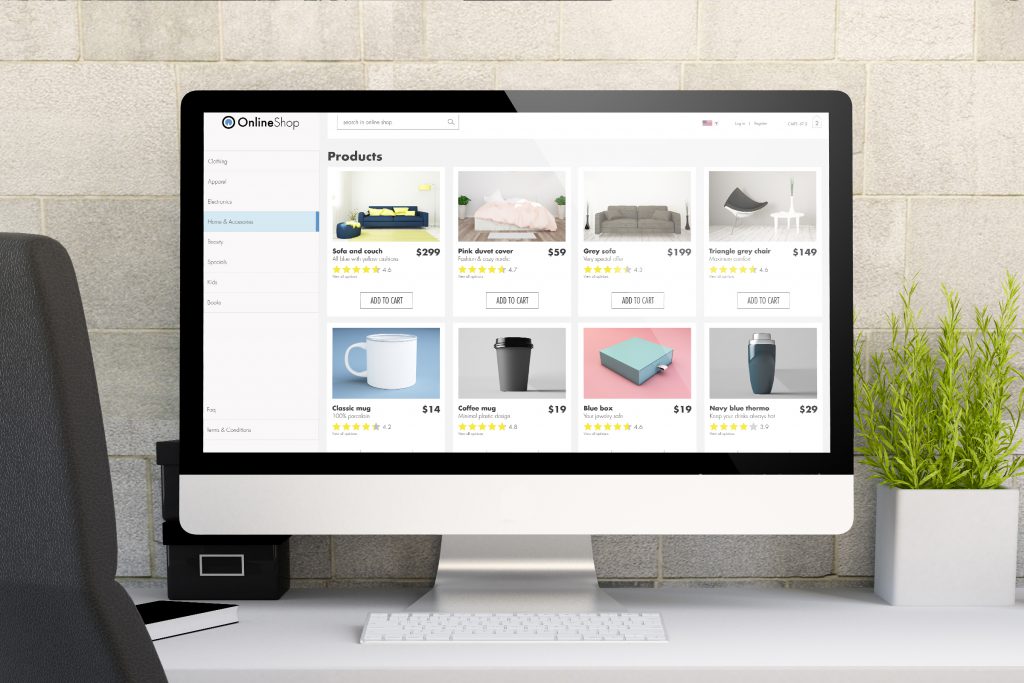You can think of a website as a collection of interlinked web pages with similar topics. It is usually under a single domain that includes a programmed starting file known as the homepage. From here, users can get to other pages on the site.
Even though there is no precise answer to how long it takes to build an e-commerce website, the quick adoption of the web as a commercial platform has caused firms to experiment with various innovative ways of conducting business.
Most e-commerce websites are designed to generate revenue and foster long-lasting customer relationships. To achieve this, you will more than likely need the services of a good e-commerce web designer. Web designs have also evolved from static hyperlink publications to dynamic multimedia web applications.
Growth of the E-commerce Sector
Over the last decade, the e-commerce sector has managed to experience steady growth, mainly due to the sales generated from online users, which surpassed those of brick-and-mortar businesses. This expansion, together with the emergence of the Covid-19 pandemic, has made e-commerce websites a commanding force, especially for the future of the global economy.
What Makes a Good E-commerce Website?
While excellent and effective e-commerce websites come in a wide range of designs and models, most of them have some primary features. They include visual elements such as images, fonts, and colors that help tell the story behind a company and enhance users’ experience when browsing.
Although beautiful e-commerce templates are the typical starting point for most website owners, it is critical to consider how they can adequately present their products and features so that consumers can relate and eventually make purchases. It would be best to remember that drawing in visitors doesn’t automatically translate to higher sales margins.
Below are some strategies and models for e-commerce website design that have helped many businesses succeed in the long run.
E-commerce Website Design Strategies and Models
Informational/Communicational Strategy
This approach calls for companies to use their websites as a supplement to traditional forms of marketing with the intent of delivering additional benefits to consumers, thereby creating significant relationships with them.
Some promotional measures this strategy applies to include the hosting of a brand’s entire product catalog online and pushing brand awareness through both paid advertising and social media channels.
On-line/Transactional Strategy
This strategy calls for businesses to use their e-commerce sites to create “Virtual Firms” that are independent and capable of attaining profitable ventures that only exist online.
This is done by building a digital retail presence that is more prominent than any physical store, such as creating a virtual business platform that offers additional information in a way competitors can’t, and offering specialty products capable of being sold worldwide.
Brand Awareness/Image Building Model
E-commerce sites that use this model offer rational and detailed information about their business and products. In some cases, you can use it to signal to prospective and current customers and competitors that the firm is cutting edge.
This model is also capable of reaching motivated consumers using an information-filled message. Since the barriers associated with the model are low, smaller businesses can apply it when creating their sites.
Cost Saving Model
E-commerce websites can save money using this model with techniques like productivity saving and cost-effective saving, which is achieved by directly meeting users’ information needs. You will find that most companies today use their e-commerce websites to support the ownership stage of the customer service life cycle.
Promotional Model
The promotional model applies a unique form of advertising that draws in potential customers to particular e-commerce websites. Its primary goal is to attract users’ to the commercial aspects of the company. In most cases where e-commerce sites use this model, they offer incentives to gain users’ attention, including digitized items like music, photographs, software, and consumer reports.
Infomediary Model
Information about consumers and their buying habits is valuable to any business, mainly if such data can be carefully analyzed and used for targeted marketing campaigns. An infomediary model provides free software access for detailed information regarding their users browsing and purchasing habits. This model usually stands a higher chance of success than the pure promotional one.
How Do You Get Started Designing Your Store?
As you embark on the design process for your e-commerce site, you should consider the look and feel of your products, in addition to your target audience. The kinds of visual elements you finally settle on, should present your products to the consumers in an appealing way and help foster a shopping environment that truly represents your brand. For instance, incorporating some of the e-commerce strategies and models mentioned above will guide your customers on their buying journey and make their shopping experience easy and enjoyable.
Final Thoughts
The adoption of websites as commercial mediums has forced companies to experiment with new online methodologies. As a result, it has become essential for employers and business owners to understand that a good e-commerce website model is a unique marriage between form and functionality that helps serve the ultimate goal of any online store, which is to sell their products.



